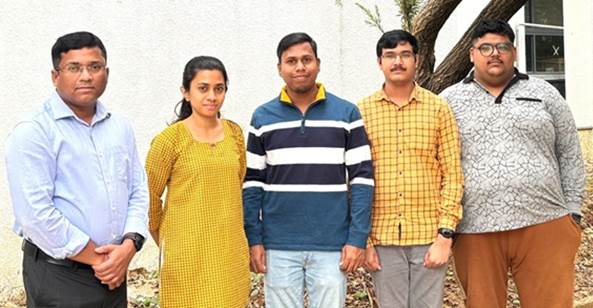Ministry of Science & Technology
Confined Electrons paves the way for improved optoelectronic materials, sensors & nano-catalysts
Posted On:
28 JAN 2025 4:17PM by PIB Delhi
In a major stride forward for nanoscience, researchers have uncovered a groundbreaking phenomenon -- electron confinement-induced plasmonic breakdown in metals.
This study opens new avenues for understanding and manipulating the fundamental behaviour of electrons in nanoscale systems which can help design more efficient nanoelectronic devices and optoelectronic materials with enhanced precision, sensors that operate at atomic and molecular levels as well as efficient nano catalysts.
Metals have long been celebrated for their plasmonic properties—collective oscillations of free electrons that enable unique optical responses. From catalysis to advanced photonic devices, plasmonic behaviour underpins a wide range of modern technologies. However, Prof. Saha’s research sheds light on an unexpected and transformative aspect of this field: how the confinement of electrons at the nanoscale disrupts and ultimately breaks down plasmonic behaviour.
A new study by Jawaharlal Nehru Centre for Advanced Scientific Research (JNCASR) in Bengaluru, under the Department of Science and Technology (DST), GoI, probe how the quantum confinement of electrons, driven by size reduction to the nanoscale, changes the electronic structure of metals. This shift, as shown by the team steered by Prof Bivas Saha leads to a suppression of the collective oscillations essential to plasmonic properties, fundamentally altering the material's optical and electronic behaviour.
At the nanoscale, materials behave in ways that often defy classical intuition. JNCASR’s work published in the prestigious Science Advances (2024, Vol. 10, Issue 47), bridges the gap between traditional plasmonics and the quantum effects that emerge at this scale.
Prof. Saha's team employed advanced spectroscopy techniques to observe plasmonic phenomena in metallic systems with varying degrees of confinement. Alongside, computational simulations provided a deep theoretical framework to explain the observed breakdown.
They used cutting-edge tools such as electron energy loss spectroscopy (EELS) and first-principles quantum mechanical calculations which helped them predict electron behaviour with unprecedented accuracy.
Apart from JNCASR, Prof. Alexandra Boltasseva and Prof. Vladimir Shalaev from Purdue University and Prof. Igor Bondarev from North Carolina State University in USA, and Dr. Magnus Garbrecht and Dr. Asha Pillai from the University of Sydney participated in this study.
This research challenges long-held assumptions in plasmonics, redefining the boundaries of what is possible with metal-based materials. The electron confinement-induced plasmonic breakdown represents not just a scientific revelation but also a call to rethink the design principles of nanoscale materials.
Speaking about the breakthrough, Prof. Saha remarked, “Our findings highlight the transformative role of quantum confinement in redefining material properties. This is not just about understanding plasmonic breakdown—it’s about pushing the limits of how we can harness nanoscale phenomena for technological innovation.”
With growing interest in quantum materials and nanotechnology, Prof. Saha's work positions JNCASR as a leader in exploring the uncharted territory where classical and quantum physics converge.
“The electron confinement-induced plasmonic breakdown in metals represents a landmark achievement in materials science and nanotechnology. By unravelling the intricate interplay between quantum confinement and plasmonic behaviour, this research sets the stage for revolutionary advancements across industries.”- commented Prasanna Das, lead author of the paper.
The implications of the study are vast, spanning -- electronics and photonics, sensing technologies and catalysts and energy conversion.


***
NKR/PSM
(Release ID: 2097003)
Visitor Counter : 2740